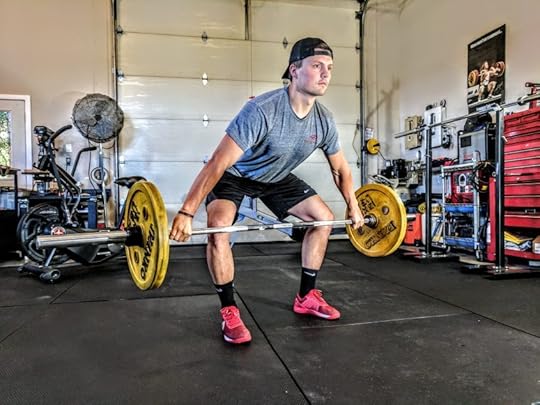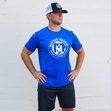Efficient Weightlifting Secrets
Efficient weightlifting involves more than just lifting heavy weights. It’s about following the best workout routines that target specific muscle groups, promote growth, and prevent plateaus. However, finding the right routines can be overwhelming with many workout options. In this article, we’ll explore the top workout routines that can help you achieve optimal results in your weightlifting journey.
The Importance of Efficiency in WeightliftingEfficiency is the key to unlocking optimal results in weightlifting. You can maximize your workout time by focusing on the best workout routines that maximize muscle engagement and minimize wasted effort. Understanding the importance of efficiency accelerates your progress and reduces the risk of overtraining, ensuring that each lift contributes significantly to your muscle development journey.
Here are 5 important aspects highlighting the significance of efficiency in weightlifting:
Maximizing Performance: Efficiency in weightlifting ensures that each movement is executed with the least amount of wasted energy. This allows athletes to lift heavier weights or perform more repetitions, leading to better overall performance and progress in strength training.Injury Prevention: Proper technique and efficient movement patterns reduce the risk of injuries. Lifting weights inefficiently can place unnecessary stress on joints, muscles, and connective tissues, increasing the likelihood of strains, sprains, and more serious injuries over time.Optimal Muscle Engagement: Efficient lifting techniques more effectively target the intended muscle groups. This means that the muscles you intend to work are doing most of the work, leading to better muscle development and balanced strength gains.Conservation of Energy: When movements are executed inefficiently, a significant amount of energy is wasted on unnecessary or counterproductive actions. Efficient lifting conserves energy, allowing athletes to perform more sets and reps without experiencing excessive fatigue.Skill Progression: Weightlifting is a skill-based activity that requires consistent practice to improve. Efficient lifting techniques are a foundation for skill progression. As athletes refine their lifting mechanics, they can continually enhance their performance and reach higher levels of expertise.Efficiency in weightlifting is not only about lifting heavier weights; it’s about performing movements to maximize benefits while minimizing risks. Whether you’re a beginner or an experienced lifter, focusing on efficiency will contribute to your long-term success and overall well-being in the sport.
Unveiling Effective Weightlifting WorkoutsLet’s delve into the workout routines that can take your weightlifting game to the next level:
1. Full-Body WorkoutsFor individuals aiming to maximize efficiency in their fitness regimen, opting for full-body workouts is an excellent decision. These comprehensive routines revolve around compound exercises meticulously designed to activate numerous muscle groups concurrently. The foundational pillars of this regimen encompass essential exercises such as squats, deadlifts, bench presses, and rows. A consistent commitment to performing these exercises thrice a week yields the potential for remarkable muscle growth and significant advancements in overall strength.
2. Push-Pull SplitThe push-pull split, a highly effective strategy, involves organizing your workout sessions into distinct “push” days, which emphasize chest, shoulders, and triceps, and “pull” days, targeting the back and biceps. This clever division enables muscles to experience ample recovery while maintaining a consistent workout schedule, fostering comprehensive muscle growth and development.
3. Upper-Lower SplitThe upper-lower split is a well-structured workout regimen that cleverly alternates between upper-body and lower-body training sessions. This thoughtful division provides a balanced working-out approach and facilitates ample recovery between sessions, building muscle and promoting healing.
To maximize the effectiveness of this split’s effectiveness, integrating heavy compound lifts such as squats, bench presses, and deadlifts is beneficial. These powerful compound movements engage multiple muscle groups simultaneously, leading to efficient and robust muscle development while fostering overall strength and fitness.
This holistic approach, incorporating energy healing, ensures that both your upper and lower body receive the attention they deserve, contributing to a well-rounded and impactful fitness journey.
4. Supersets and Circuit TrainingIntegrating supersets and circuit training into your routine is advantageous to optimize your workout for both time efficiency and heightened intensity. This dynamic strategy involves pairing two distinct exercises, each targeting different muscle groups and executing them consecutively with minimal rest in between. This seamless transition between exercises accelerates the pace of your workout and sustains an elevated heart rate, creating a cardiovascular component within your strength training.
By embracing supersets and circuit training and incorporating the best way to lose weight, you effectively target a broader range of muscles in a shorter time frame, leading to more efficient overall muscle engagement and development. Furthermore, the continuous movement and strategic combination of exercises in a circuit fashion stimulate your muscles and enhance your cardiovascular system. This approach is particularly beneficial for those seeking to optimize their fitness results while managing time constraints.
A Glimpse into the Best Workout RoutinesLet’s break down a few examples of these efficient weightlifting routines that incorporate the concepts mentioned above:

Squats – 3 sets of 8-10 reps
Bench Press – 3 sets of 8-10 reps
Bent-Over Rows – 3 sets of 8-10 reps
Overhead Press – 3 sets of 8-10 reps
Deadlifts – 2 sets of 6-8 reps
Push-Pull Split ExamplePush Day:Incline Bench Press – 3 sets of 8-10 reps
Shoulder Press – 3 sets of 8-10 reps
Tricep Dips – 3 sets of 10-12 reps
Pull Day:Pull-Ups – 3 sets of 8-10 reps
Dumbbell Rows – 3 sets of 8-10 reps
Bicep Curls – 3 sets of 10-12 reps
Upper-Lower Split ExampleUpper Body:Bench Press – 3 sets of 8-10 reps
Rows – 3 sets of 8-10 reps
Dumbbell Shoulder Press – 3 sets of 8-10 reps
Lower Body:Deadlifts – 3 sets of 6-8 reps
Lunges – 3 sets of 10-12 reps
Leg Press – 3 sets of 10-12 reps
Supersets and Circuit Training ExampleSuperset: Bench Press and Bent-Over Rows – 3 sets
Superset: Pull-Ups and Shoulder Press – 3 sets
Circuit: Squats, Tricep Dips, and Bicep Curls – 3 rounds
Tips for a Personalized Weightlifting RegimenHere are 10 surefire tips for an efficient weightlifting workout:
Plan Your Routine: Outline your workout routine in advance. Know which muscle groups you’ll target on specific days, ensuring a balanced approach to your training. Warm-Up Thoroughly: Dedicate time to a dynamic warm-up. Engage in light cardio and dynamic stretches to prepare your muscles and joints for the upcoming lifts. Focus on Form: Prioritize proper form over lifting heavy weights. Correct form reduces the risk of injury and maximizes muscle engagement. Compound Movements: Incorporate compound exercises like squats, deadlifts, and bench presses. These multi-joint movements recruit more muscle fibers and lead to efficient gains. Progressive Overload: Gradually increase the weight you lift to challenge your muscles continually. Strive for gradual increments to avoid overexertion. Mind-Muscle Connection: Concentrate on the muscles being worked. Visualize the movement and intentionally contract the targeted muscles for optimal results. Rest Intervals: Manage your rest intervals strategically. Shorter rests (30-60 seconds) can promote muscle hypertrophy, while longer rests (1-2 minutes) are suitable for strength gains. Hydration and Nutrition: Stay hydrated before, during, and after your workout. Consume a balanced meal with protein and carbs about an hour before training to fuel your efforts. Track Your Progress: Keep a training journal to record your lifts, sets, and reps. Tracking your progress allows you to adjust your routine and celebrate your achievements. Recovery and Rest: Allocate time for recovery. Schedule rest days to allow your muscles to repair and grow, ultimately enhancing your overall performance.Remember, “Consistency is Key” in weightlifting. Listen to your body, and don’t be afraid to adapt your routine as you learn more about what works best for you. If you’re new to weightlifting, consider seeking guidance from a fitness professional and investing in the best functional trainer to ensure safe and effective training.
ConclusionEfficient weightlifting is all about working smarter, not harder. By adopting the best workout routines that suit your goals and preferences, you can make remarkable progress in your fitness journey. Remember to prioritize proper form, progressive overload, and adequate rest to ensure optimal results. Stay consistent, challenge yourself, and watch your strength and muscle gains soar.
Author BioRick Kaselj is a highly respected health and fitness expert with over two decades of experience. He founded ExercisesforInjuries.com, OliviaDiet.com, Gentlestretching.net, Lifelongwellness.org, and HealthNewsDay.com, where he provides valuable resources on fitness, injury prevention, and healthy eating. Rick’s unique approach to fitness emphasizes targeted exercises and proper form, promoting long-term health and injury prevention. His expertise is showcased in his numerous books and training programs, which have helped countless individuals improve their physical health and well-being. Rick’s dedication to helping people achieve their health goals has earned him a reputation as a trusted authority in the industry.



